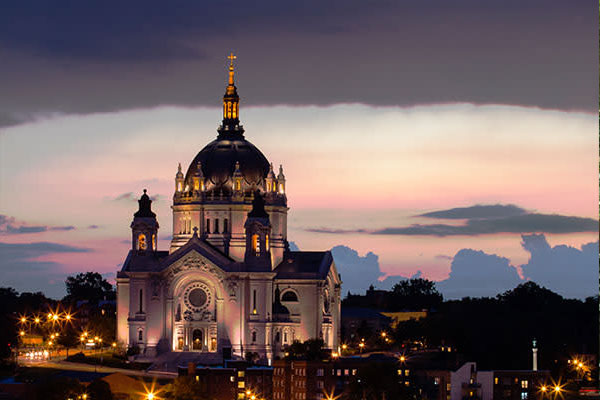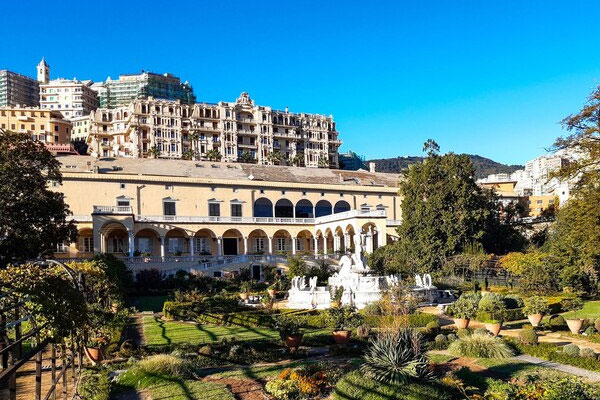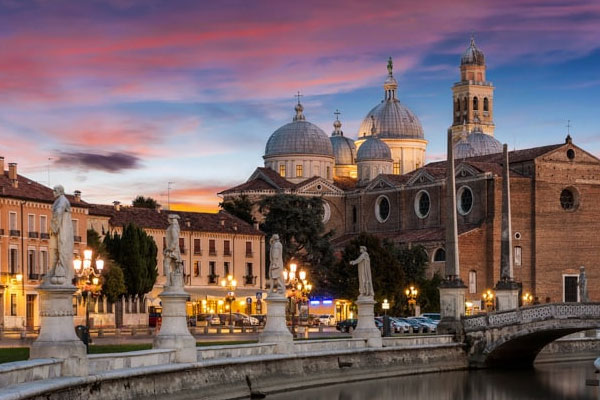Travel
Cathedral of Saint Paul London

Cathedral of Saint Paul London
Exploring the Majesty of Cathedral of Saint Paul London
Introduction:
Nestled in the heart of London’s bustling financial district, St. Paul’s Cathedral stands as an iconic testament to the city’s rich history and architectural grandeur. Recognized as the only religious building in England adorned with a fully Baroque dome, and boasting the second-largest dome in Europe after St. Peter’s in Rome, St. Paul’s is not only a spiritual sanctuary but also a panoramic vantage point offering breathtaking views of the city. This article delves into the cathedral’s compelling history, its architectural marvels, the notable figures laid to rest in its crypt, and the immersive experience it offers to visitors.
Unveiled History:
The saga of St. Paul’s Cathedral is a tale of resilience, rising from the ashes multiple times over the centuries. Its origins date back to 604 when the first cathedral, constructed of wood, graced Ludgate Hill during the reign of King Æthelbert. However, a relentless onslaught of fires marked the destiny of subsequent constructions, with Viking invasions and the Great Fire of London in 1666 delivering significant blows.
The fourth rendition, known as Old St. Paul’s, emerged in the late 11th century, showcasing the magnificence of Norman and Gothic architecture. This cathedral witnessed the union of Henry VIII’s older brother, Arthur, with Catherine of Aragon in 1501. The ravages of the Reformation and the Great Fire reduced Old St. Paul’s to ruins, leaving only remnants of its former glory.
Christopher Wren, the visionary architect, took on the monumental task of rebuilding St. Paul’s after the Great Fire. The foundation stone was laid in 1675, and the cathedral, a harmonious blend of Baroque and classical styles, finally emerged in 1711, 36 years later. This architectural masterpiece, adorned with a splendid dome, has since become an enduring symbol of London.
Architectural Splendors:
The Nave:
Stretching 152 meters in length and 36 meters in width, the nave forms the cathedral’s most expansive section. Its grandeur captures the essence of St. Paul’s, offering a sense of awe and reverence.
The Choir:
The chancel, the first consecrated part of the cathedral, houses magnificent original oak and lime stalls. Responding to Queen Victoria’s critique, the chancel underwent a transformation with mosaics depicting Old Testament blessings and the angel Gabriel’s role in announcing Jesus’s birth to the Virgin Mary.
The Dome:
St. Paul’s boasts one of the world’s largest cathedral domes, soaring to a height of 111 meters and weighing approximately 65,000 tonnes. Christopher Wren’s architectural brilliance finds visual expression in the dome, adorned in 1715 by painter James Thornhill with trompe-l’oeil scenes from the life of St. Paul. Despite the challenges of pollution and humidity, Thornhill’s monochromes were restored in 1853.
The Crypt:
Beneath the cathedral lies the largest crypt in Europe, a veritable pantheon housing 300 luminaries of the nation. Admirers of Florence Nightingale, Admiral Nelson, Duke Wellington, Turner, Henry Moore, Laurence of Arabia, and Winston Churchill find their final resting place in this historic repository.
Whispering Gallery:
Ascending 257 steps to the Whispering Gallery, positioned 33 meters above the ground, unveils a magnificent view of the choir. This acoustically unique gallery owes its name to the clarity with which whispered words traverse its expanse.
Stone and Golden Galleries:
Continuing the ascent with 119 additional steps leads to the Stone Gallery, providing a closer look at the cathedral’s cap structure. Climbing an additional 152 steps to the Golden Gallery rewards visitors with a spectacular panorama of London. From the Shard to 20 Fenchurch Street, the Tate Modern, and the London Eye, the city unfolds in all its splendor.
The Crypt’s Illustrious Residents:
Within the expansive crypt lie the final resting places of iconic figures whose contributions shaped British history. Admiral Nelson, known for his triumph at the Battle of Trafalgar, rests in a black marble sarcophagus crafted from Cardinal Wolsey’s confiscated 16th-century artifact. Lord Wellington, the victor of the Battle of Waterloo, finds repose in a Cornish granite coffin.
Practical Information for Visitors:
Panoramic Views and Climb Details:
The panoramic view from the summit is worth the climb of 376 steps. Visitors are advised to wear comfortable shoes for navigating the spiral staircases and worn steps.
Access to the Whispering Gallery, Stone Gallery, and Golden Gallery is by stairs only.
Crypt Accessibility and Vertigo Caution:
The crypt is accessible by an elevator. Visitors with reduced mobility are encouraged to check if their wheelchair or scooter fits within the designated space.
Caution is advised for individuals prone to vertigo.
Duration and Audio Guide:
The average duration of the visit is approximately 2 hours.
An audio guide in French is available for a comprehensive exploration.
Photography and Mobility Considerations:
Photography without flash is permitted inside the cathedral.
Individuals with reduced mobility, accompanied by a caretaker, can visit free of charge.
Free Toilets and Nannybag Promotion:
Free toilets are available in the cathedral crypt and are wheelchair-accessible.
A promotion for luggage storage in London is detailed in the article.
Ticketing and Free Entry Options:
Ticket Purchase and Reservations:
Reservations are strongly recommended. Tickets can be purchased on the GetYourGuide website, with the option to pay in euros and benefit from free cancellation.
Included in the entry is an audio guide providing a presentation of St. Paul’s Cathedral in French.
Free Entry Opportunities:
Free entry is available during services, akin to Westminster Abbey. However, this restricts visitors from freely wandering and excludes access to the dome.
During the Lord Mayor’s Show, typically the second weekend in November, tour guides offer free guided tours of St. Paul’s Cathedral.
Conclusion:
St. Paul’s Cathedral stands as an architectural gem and a symbol of London’s rich heritage. Its baroque-style dome, adorned with frescoes and mosaics, invites wonder, while the panoramic view from its summit unfolds a breathtaking panorama of London’s most iconic landmarks. The cathedral’s historical significance, coupled with the immersive experience it offers, makes it a must-visit destination for both locals and tourists alike. Whether climbing to the summit, exploring the crypt, or simply admiring the architectural marvels within, Cathedral of Saint Paul London remains a testament to the enduring spirit of this vibrant city.
Travel
What to do in Genoa – Travel To Genoa

What to do in Genoa – Travel To Genoa
What to do in Genoa :
Genoa, often overshadowed by its more popular Italian counterparts, holds a wealth of treasures waiting to be discovered. While it may not immediately come to mind when planning an Italian adventure, this maritime city boasts a rich history as the former capital of a powerful republic and the birthplace of renowned figures like Christopher Columbus and Niccolo Paganini.
Despite its lesser-known status, it offers a unique charm and a plethora of attractions that appeal to curious travelers. So, what makes this city special, and what should you do when you visit?
Getting to Genoa
Reaching Genoa is easier than you might think. During the summer months, S7 Airlines offers direct flights, while various European carriers operate year-round flights. Alternatively, you can fly to Milan and take a short train ride to Genoa, which is only about an hour and a half away. Train travel is also an option, with direct routes available from cities like Moscow. Whether you choose to fly or take the train, Genoa is well-connected and easily accessible.
Where to Stay in Genoa
Choosing accommodation in Genoa requires some consideration, especially due to the city’s intricate layout. The historical center may seem compact, but its labyrinthine streets can be confusing to navigate, particularly with luggage. Opting for hotels near major transportation hubs like Principe and Bignoli train stations or metro stations is advisable.
For first-time visitors staying briefly, accommodations near Genova Piazza Principe offer convenience and easy access to transportation links, including the airport bus stop and cruise terminal. From luxurious hotels like the Grand Hotel Savoia to budget-friendly options such as Hotel Chopin, there’s something to suit every preference and budget.
Getting Around Genoa
Exploring Italy on foot is the best way to immerse yourself in its unique atmosphere. While the city’s narrow medieval streets may pose navigational challenges, they offer an authentic glimpse into its history and character. However, public transportation is essential for covering longer distances or navigating the city’s verticality.
Genoa boasts a metro system, buses, funiculars, and elevators integrated into the transportation network. Consider purchasing a 24-hour Genova Pass for unlimited access to public transport, excluding airport shuttles.
What to See in Genoa
Contrary to popular belief, Genoa is brimming with attractions awaiting discovery. From opulent palaces and picturesque gardens to ancient churches and world-class museums, the city offers something for every traveler. Key highlights include Ferrari Square, a grandiose civic space; the Cathedral of St. Lawrence, guarded by stone lions; and the Palazzi dei Rolli, a collection of historic palaces showcasing Genoa’s architectural splendor.
Additionally, numerous churches, including the Church of St. Peter’s and the Church of St. John, offer cultural and architectural delights. Don’t miss iconic landmarks like Villa del Principe, Lanterna lighthouse, and the medieval gate of Porta Soprano, each adding to Genoa’s allure.
Day Trips from Genoa
While Genoa itself warrants exploration, it also serves as an ideal base for day trips to nearby destinations. Along the Ligurian coast, picturesque towns like the Cinque Terre National Park, Portofino, Rapallo, and Camogli beckon with their scenic beauty and charm. Venture westward to discover hidden gems such as Noli, Finale Ligure, and Albenga, each offering its own unique allure.
Beyond the coast, explore the caves of Toirano or visit the historic town of Campo Ligure, known for its medieval castle. With so much to see and do in the surrounding area, Genoa provides an excellent starting point for exploring Liguria’s diverse attractions.
Conclusion
Genoa may not be as widely recognized as other Italian cities, but its cultural heritage, architectural marvels, and coastal beauty make it a destination worth exploring. Whether you’re strolling through its labyrinthine streets, admiring historic palaces, or embarking on day trips along the Ligurian coast, Genoa captivates visitors with its rich history and vibrant atmosphere. So, why not uncover the hidden treasures of this underrated gem on your next Italian adventure?
Travel
Things to do in Rimini Italy

Things to do in Rimini Italy
Do you know the most important Things to do in Rimini Italy? Let’s take a look
Rimini is renowned as a beach resort destination, drawing visitors from Italy and beyond with its long history of seaside hospitality. However, beyond its sandy shores lies a city steeped in ancient heritage and cultural charm, offering a wealth of attractions for travelers to discover. In this comprehensive guide, we’ll delve into everything you need to know to plan an unforgettable trip to Rimini.
Getting to Rimini
Rimini is accessible by air, land, and sea, making it convenient to reach from various parts of Italy and Europe. The city has its own international airport, Federico Fellini Airport, serving both domestic and international flights. Additionally, Rimini is well-connected by train, with direct rail links to major cities like Bologna and Ancona. For those arriving by car, highways provide easy access to Rimini from neighboring regions.
Where to Stay in Rimini
With its status as a popular resort destination, Rimini offers a wide range of accommodation options to suit every traveler’s needs and preferences. The Marina Centro area, situated in the heart of the resort district, is ideal for beachgoers seeking convenience and proximity to amenities.
Here, hotels like Erbavoglio and De Londres offer comfortable accommodations within walking distance of the beach. Alternatively, for those looking to explore the city’s historic center, hotels in the Old Town area provide easy access to landmarks like the Tempio Malatestiano and Ponte di Tiberio.
Getting Around Rimini
Navigating Rimini is relatively straightforward, with most attractions located within easy reach of the city center. Visitors staying in Marina Centro can explore the resort area on foot, while those venturing further afield can make use of public transportation options like buses and trains. Rimini’s efficient public transit system provides convenient access to key sites, including the Old Town and surrounding areas.
What to See in Rimini
Rimini boasts a rich cultural heritage, with a variety of historical and architectural landmarks waiting to be explored. In the city’s historic center, visitors can admire the impressive Tempio Malatestiano, a medieval temple converted into a cathedral, and stroll across the ancient Ponte di Tiberio, a Roman bridge dating back to the 1st century AD. For a glimpse into Italy’s cinematic history, Parco Federico Fellini offers a tribute to the renowned filmmaker with statues and exhibits celebrating his life and work.
In addition to its historical attractions, Rimini is home to modern marvels like Italia in Miniatura, a theme park featuring miniature replicas of famous Italian landmarks. Perfect for families and visitors of all ages, this unique attraction offers a fun and educational experience that showcases the country’s cultural heritage on a smaller scale.
Day Trips from Rimini
While Rimini itself offers plenty to see and do, its strategic location makes it an ideal base for exploring the surrounding region. Nearby destinations like San Marino, Santarcangelo di Romagna, and Gradara are easily accessible by car or public transportation, offering charming villages, historic sites, and picturesque landscapes to discover.
For those seeking a taste of urban culture, cities like Bologna, Ravenna, and Ancona are just a short train ride away, providing opportunities to explore their rich history, vibrant arts scene, and culinary delights.
Conclusion
From its sun-drenched beaches to its ancient landmarks and modern attractions, Rimini offers a diverse array of experiences for travelers to enjoy. Whether you’re soaking up the sun along the Adriatic coast, exploring the city’s historic center, or embarking on day trips to nearby destinations, Rimini promises a memorable and rewarding travel experience for visitors of all interests and ages.
Travel
Where to Stay in Trento Italy

Where to Stay in Trento Italy
Where to Stay in Trento, Italy :
Trento, nestled in a valley at the base of the Alps, is a city worth exploring! With its picturesque surroundings and proximity to other charming towns and attractions, Trento offers something for every traveler. Whether you plan to wander through the city streets, venture into the nearby mountains, or use Trento as a launching pad for further adventures, there’s plenty to see and do here.
Which area of Trento is best for accommodation?
Trento is relatively straightforward to navigate, with the historical city center separated from the train and bus stations by a large square. Near the station, you’ll find a tourist information kiosk where you can pick up a map of the city, or visit a nearby travel agency for assistance.
Trento offers city-wide wireless internet access, although you may need to register in advance for login credentials. It’s worth noting that temperatures can vary significantly between the city and the mountains, so be sure to pack appropriate clothing and footwear for your adventures.
The area around the train station is relatively clean and quiet, making it a convenient option for those planning to explore the region using public transportation. Hotels near the station, such as the Grand Hotel Trento and Hotel America, offer comfortable accommodations at slightly lower prices compared to those in the city center. These hotels provide easy access to both the station and the historical center of Trento, which is just a short walk away.
Speaking of the city center, Trento’s historical district is relatively compact, making it easy to explore on foot. When choosing a hotel in this area, focus on factors such as cost and traveler reviews rather than proximity to specific attractions, as most hotels are within walking distance of the main sights.
Keep in mind that older buildings in the city center may lack amenities like elevators and spacious bathrooms, but they often offer charm and character in abundance.
Hotels such as Hotel Venezia and Hotel Aquila D’Oro offer comfortable accommodations in the heart of Trento’s city center. While some rooms may offer views of the city or nearby landmarks, be prepared for the possibility of street noise, especially in the mornings. Alternatively, Albergo Accademia provides spacious designer rooms with amenities like jacuzzis, although guests may prefer rooms facing the quieter courtyard.
For those seeking a more independent accommodation option, apartments can be a great choice. Borgo Rossi Apartments, located near Piazza Venezia, offer kitchenettes and dining areas, allowing guests to prepare their meals and experience local cuisine firsthand. Be sure to communicate with the apartment owners or managers ahead of time to clarify details like heating and air conditioning availability, parking options, and key pickup procedures.
Conclusion
In conclusion, Trento offers a range of accommodation options to suit every traveler’s needs and preferences. Whether you choose to stay near the train station for convenience or in the heart of the city center for easy access to attractions, you’re sure to enjoy your time exploring this charming Italian city.
-

 Travel9 months ago
Travel9 months agoBest Spinning Rod for Bass 2024
-

 Technology9 months ago
Technology9 months agoBest Lure for Trout 2024
-

 Travel9 months ago
Travel9 months agoBest Hunting and Fishing Clothing 2024
-

 Travel9 months ago
Travel9 months agoBest Robot Vacuum Cleaners 2024
-

 Technology9 months ago
Technology9 months agoBest Floats for Night Fishing
-

 News6 months ago
News6 months agoValentine’s Deals
-

 Technology9 months ago
Technology9 months agoBest Twisters for Fishing 2024
-

 Travel9 months ago
Travel9 months agoBest Spinning Fishing Reels for Bass 2024



















